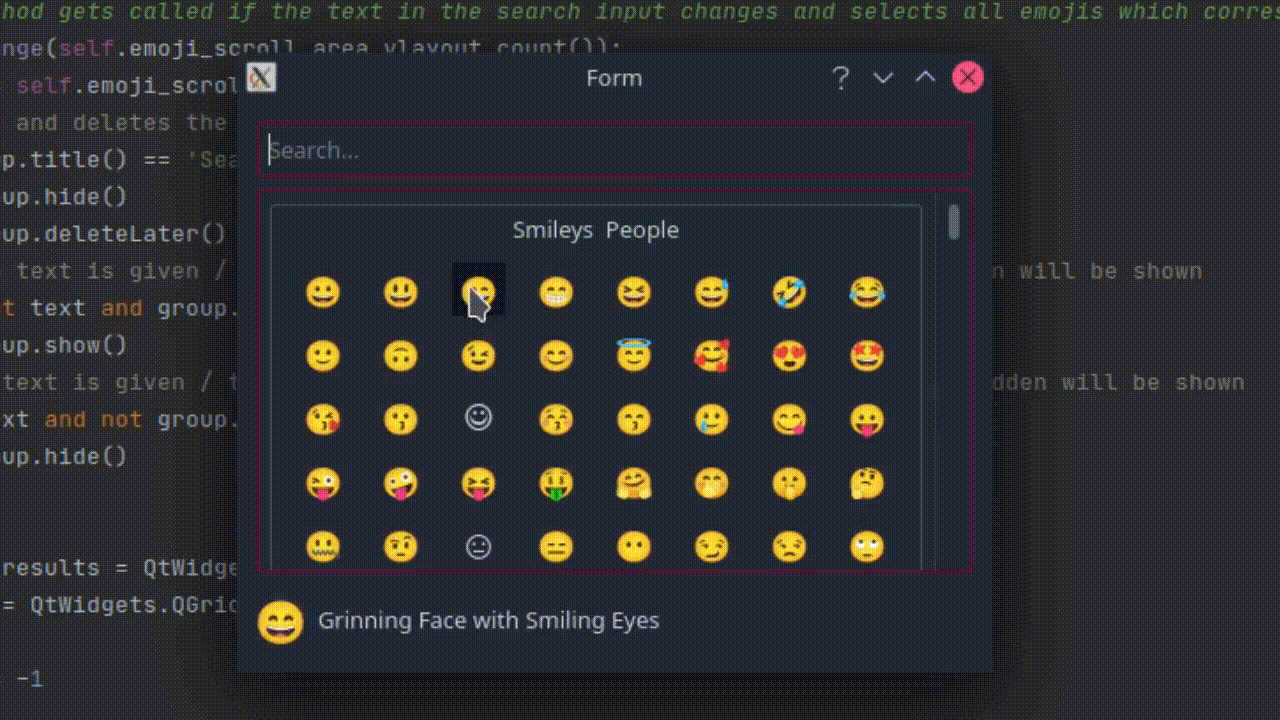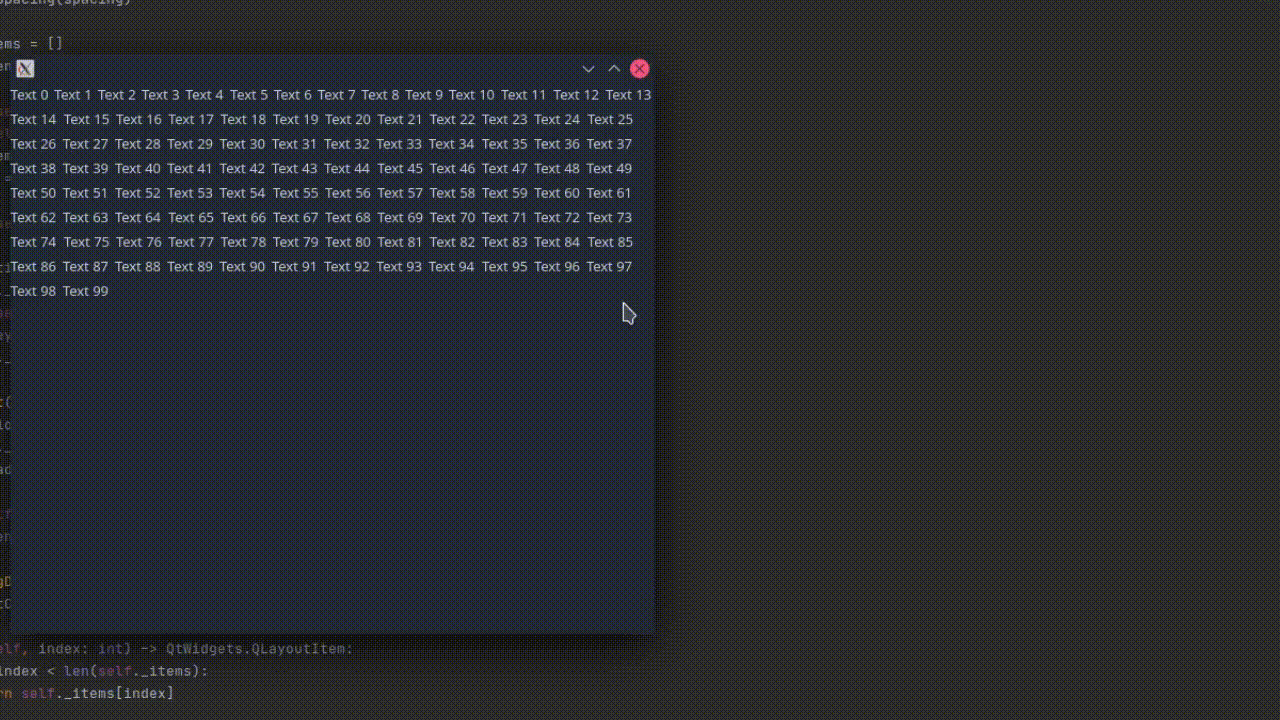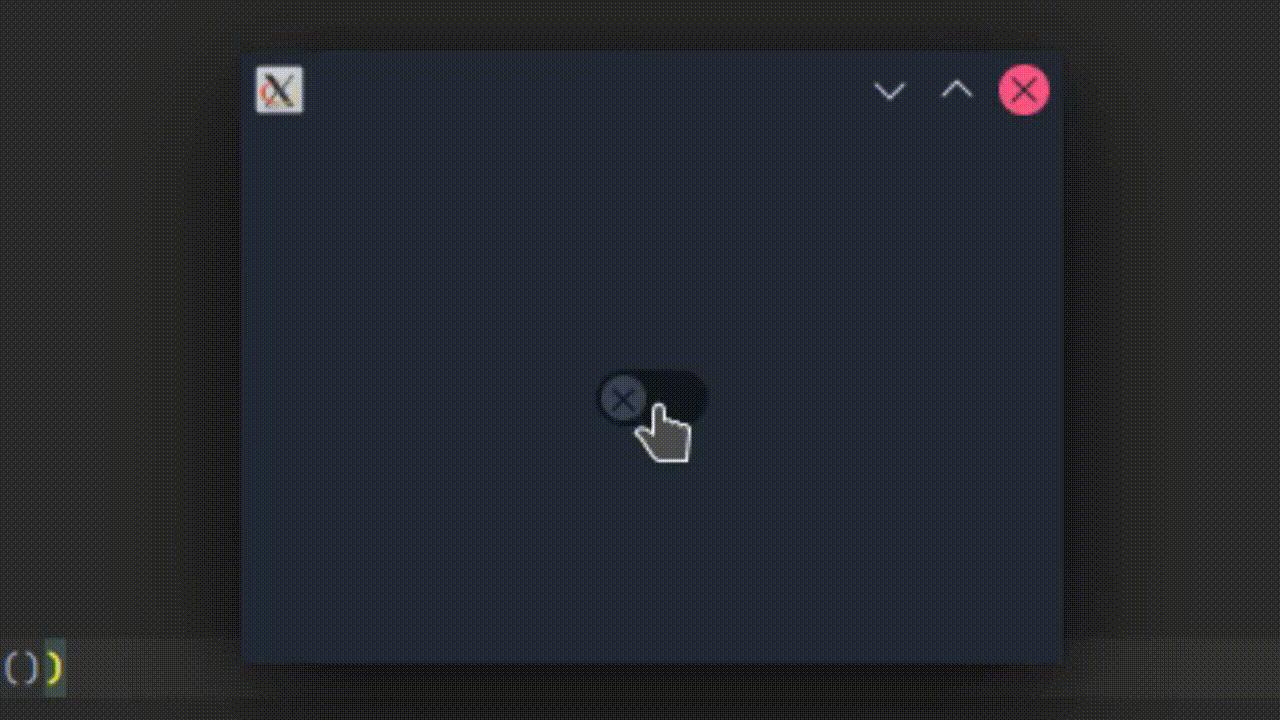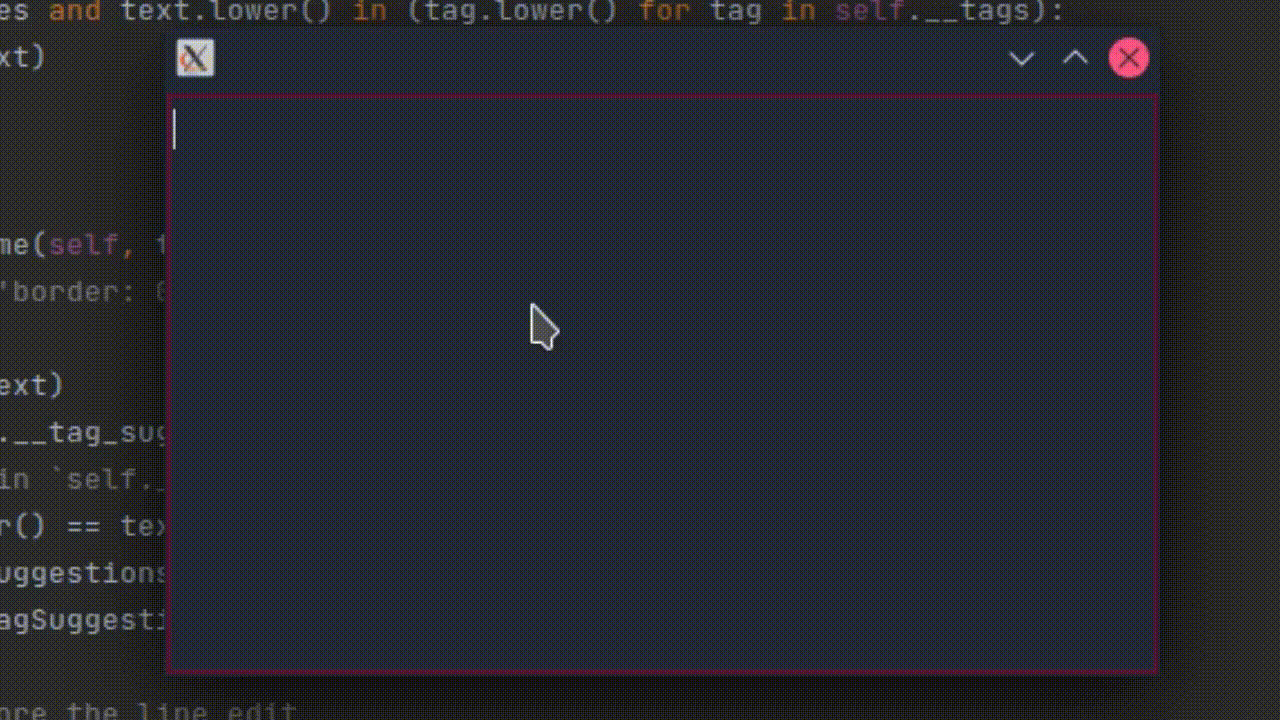mirror of
https://github.com/bytedream/PyQt5-expansion.git
synced 2025-06-01 14:40:56 +02:00
PyQt5-expansion
This is a collection of PyQt5 classes, which I'm using or I have used.
Because i use KDE Plasma, the look of the objects on your system may be different than my demonstrations
QEmojiPicker
A resizable widget which let you choose from various emojis. NOTE: Not every emoji looks "nice" in PyQt5 so you may have to install a custom font
from PyQt5 import QtWidgets # import pyqt5
from QOptionObjects import QEmojiPicker # import the emoji picker
if __name__ == '__main__':
# create a new app
app = QtWidgets.QApplication([])
# initializes the emoji picker
emoji_picker = QEmojiPicker(
# this option can say how many emojis are in a row
items_per_row=8,
# with this enabled, the emoji search will be faster but less accurate
performance_search=True
)
# this will open the emoji picker and return the selected emoji
print(emoji_picker.select())
QFlowLayout
Inspired from https://github.com/baoboa/pyqt5/blob/master/examples/layouts/flowlayout.py
A hydrodynamic layout which rearranges the items in it dynamically if its resized
from PyQt5 import QtWidgets # import pyqt5
from QOptionObjects import QFlowLayout # import the flow layout
if __name__ == '__main__':
# create a new app
app = QtWidgets.QApplication([])
widget = QtWidgets.QWidget()
# initializes the layout
layout = QFlowLayout()
# add 100 labels to see its resize function
for i in range(100):
layout.addWidget(QtWidgets.QLabel(f'Text {i}'))
# set the layout to the widget and show it
widget.setLayout(layout)
widget.show()
app.exec()
QSwitch
Inspired from https://stackoverflow.com/questions/14780517/toggle-switch-in-qt
A simple toggle switch
from PyQt5 import QtWidgets # import pyqt5
from QOptionObjects import QSwitch # import the switch
if __name__ == '__main__':
# create a new app
app = QtWidgets.QApplication([])
widget = QtWidgets.QWidget()
layout = QtWidgets.QHBoxLayout()
# initializes the switch
switch = QSwitch()
# add the switch to the layout
layout.addWidget(switch)
# set the layout to the widget and show it
widget.setLayout(layout)
widget.show()
app.exec()
QTagEdit
A widget where you can create, delete and edit tags
from PyQt5 import QtWidgets # import pyqt5
from QOptionObjects import QTagEdit # import the tag edit
if __name__ == '__main__':
# create a new app
app = QtWidgets.QApplication([])
# creates the tag edit
tag_edit = QTagEdit(
# here you can set some suggestion that will be shown if the user types in something
tag_suggestions=['tag 1' 'tag 2', 'tag 3']
)
# manually add a tag
tag_edit.addTag('a tag')
# manually remove a tag
tag_edit.removeTag('a tag')
# clear all tags
tag_edit.clear()
# clear all tags and add the given tag after this operation
tag_edit.setTags(['a tag', 'another tag'])
# sets the tag suggestions you can also define when initializing the class
tag_edit.setTagSuggestions(['1 tag', '2 tag', '3 tag'])
# if True, the user will be unable to define a tag with the same name twice
tag_edit.enableCheckForDoubles(True)
# if True, the tag suggestions will e shown
tag_edit.enableTagSuggestions(True)
# print all tags
print(tag_edit.tags())
# show the tag edit
tag_edit.show()
app.exec()
Languages
Python
100%



